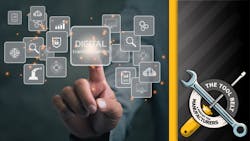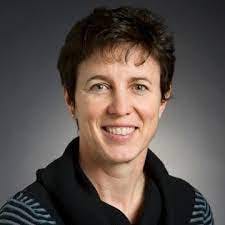Podcast: The impact of AI – How technological innovations are affecting the industry
Terri Lewis is a senior executive at Planet Connected and a 32-year veteran of Caterpillar. She began her career in technical field support before embarking on several "mini careers," including aftermarket parts marketing, service operations, product marketing, heavy construction marketing, product development, M&A, electronic supply chain, and end of life support. Terri then spent six years in digital strategy where she learned how digitalization could completely transform a business, from customer activities to client interactions and overall company goals. Plant Services editor in chief Thomas Wilk and managing editor Anna Townshend recently spoke with Terri about how to successfully implement digital transformation initiatives.
PS: So Terri, it's been about a month and 1/2 since the Fluke event. You've done a little bit of global traveling since then. Hopefully we can touch on that, but let's go ahead and start with your time at Caterpillar. You told us a couple of really great stories about that time at the Fluke event, and the detail that stands out is that you framed your experience there as eight different career changes without changing company. And that was in large part due to technology changes. Could you talk to us a little bit about that?
TL: Yeah. First off, I’d like to compliment you for saying that I'm younger. Actually, I spent 32 years at CAT, not 20.
PS: Ah, my mistake, sorry Terri.
TL: No, that's alright. I just feel young! I had fabulous opportunities at Caterpillar. I started off in the technical field support when I hired in. I was an electrical engineer, a recent graduate, and at the time Caterpillar had 65 electrical engineers. It was not big. I moved into aftermarket parts marketing, service operations (you know, efficiency studies in terms of the repair areas or the dealerships), product marketing, heavy construction marketing, product development, M&A, electronic supply chain, and end of life support.
Then the last six years was in digital, in the strategy role set up by the executive office. All of those (I call them) career changes really helped me understand the impact that digital could do to transform our customers, what they do, our interactions with them, and transform what we were doing as a company.
PS: You mentioned specifically at the event that your focus was on eliminating downtime. That was your passion while at Caterpillar and it still kind of is, right?
TL: Yeah, absolutely. I think that the really interesting stuff is taking data and technology and knowledge, right, and my take away was making unplanned downtime a myth. And that seems a bit bold, but I think it's doable, right? It's bringing together the elements of people, process, and technology together, and leveraging that, starting with people – emphasize people, right, it's not just about tech – and I think most companies can get there.
PS: Does it take the same time for companies to get there or do you think that some companies are always looking for one of those magic three – people, process, technology – and there's always something that's missing?
TL: Yeah, that's a great question. One of the things that I see is a mistake over and over, including what we did at CAT, was focusing on the technology first and not understanding people and process, then technology, in that order.
I was excited at some of the other presentations by customers of Fluke. The ones that were successful focused on people, right: get their engagement, help them identify what the problems are. They are really the secret sauce of an organization of knowing what the issues are and then watch what they're doing from a process flow, and then figure out how to leverage technology to make it work. So yeah: people, process, tech, in that order, not the other way around.
PS: Klaus Blache at University of Tennessee Knoxville's Reliability and Maintainability Center is fond of saying that every success story of this kind of starts with maintenance and operations getting on the same page, and understanding what the problem is and what they want to do together and cooperating.
TL: Yeah, that’s people. I talked to him and what we talked about too, is getting them together and having them have a consensus on what the problem is. That takes a bit of time, right? What is the real problem we want to solve, versus a myriad of … that's where you get into pilot purgatory.
PS: Can you talk about one project at Caterpillar on the digital side that was a success story? Something that you could point to as saying, yeah, you know what, Caterpillar and our team recognize what digital could do for us and we got to win out of it?
TL: Yeah, let's see, examples. One of them that's out there that was really interesting was in Namibia, B2Gold, they were actually trying to improve their sustainability and renewable energy, so they put in a solar plant, solar field with gensets. We ended up connecting it, all of it. We had about 24,000 data channels coming back to us with weather data and energy off of the systems, the processing plant, to help them optimize their energy use in a remote location. It's out there on the Internet in terms of what we did, it's public information, but it really helped them in terms of their sustainability goals. Getting fuel into remote locations like mine sites is expensive, sSo it helped them reduce their costs and you know their operations. So that was one of the most difficult, but it was one of the coolest projects I worked on.
PS: Can you talk about one project at Caterpillar on the digital side that was a success story? Something that you could point to as saying, yeah, you know what, Caterpillar and our team recognize what digital could do for us and we got to win out of it?
TL: Yeah, let's see, examples. One of them that's out there that was really interesting was in Namibia, B2Gold, they were actually trying to improve their sustainability and renewable energy, so they put in a solar plant, solar field with gensets. We ended up connecting it, all of it. We had about 24,000 data channels coming back to us with weather data and energy off of the systems, the processing plant, to help them optimize their energy use in a remote location. It's out there on the Internet in terms of what we did, it's public information, but it really helped them in terms of their sustainability goals. Getting fuel into remote locations like mine sites is expensive, sSo it helped them reduce their costs and you know their operations. So that was one of the most difficult, but it was one of the coolest projects I worked on.
PS: That is really cool and we're living in a sustainable moment too, where that story is going to resonate with people. Mine stories are always interesting to me because once you make one bit of progress in one area, usually there's like a rollover positive effect on other areas. I've heard of mines that sensored up their fleet equipment and sent a lot of data via the IoT to the cloud to figure out how the equipment is operating. They were so successful at understanding variances in sensor data that they could tell if this was a vehicle issue or a pothole in the road issue, and they actually ended up being able to fix the roads more efficiently because they could tell when the anomaly was a pothole. It ended up not being just fewer repairs in the fleet itself but also greater production, because the roads were better out of the mine and they were able to move more ore more quickly.
TL: That's a good example. Going back to that B2Gold application, right? We had the data from our gensets – we were connecting thousands of our gensets, and those are big power, if you don't have power, if they're not connected to the grid, it can be life changing depending where they're at. We had our predictive reliability working on our gensets to help them prepare and order parts because they're remote, and didn't want to have inventory of everything out on the mine site. We helped plan ahead on the maintenance and repairs and then making sure that they always went on. We could do the remote Start / Stop of the generators and take that data, apply our analytics to it, and understand whether they were going to be ready to run when they needed to run.
Read the rest of the transcript
About the Author

Anna Townshend
managing editor
Anna Townshend has been a journalist and editor for almost 20 years. She joined Control Design and Plant Services as managing editor in June 2020. Previously, for more than 10 years, she was the editor of Marina Dock Age and International Dredging Review. In addition to writing and editing thousands of articles in her career, she has been an active speaker on industry panels and presentations, as well as host for the Tool Belt and Control Intelligence podcasts. Email her at [email protected].

Thomas Wilk
editor in chief
Thomas Wilk joined Plant Services as editor in chief in 2014. Previously, Wilk was content strategist / mobile media manager at Panduit. Prior to Panduit, Tom was lead editor for Battelle Memorial Institute's Environmental Restoration team, and taught business and technical writing at Ohio State University for eight years. Tom holds a BA from the University of Illinois and an MA from Ohio State University

